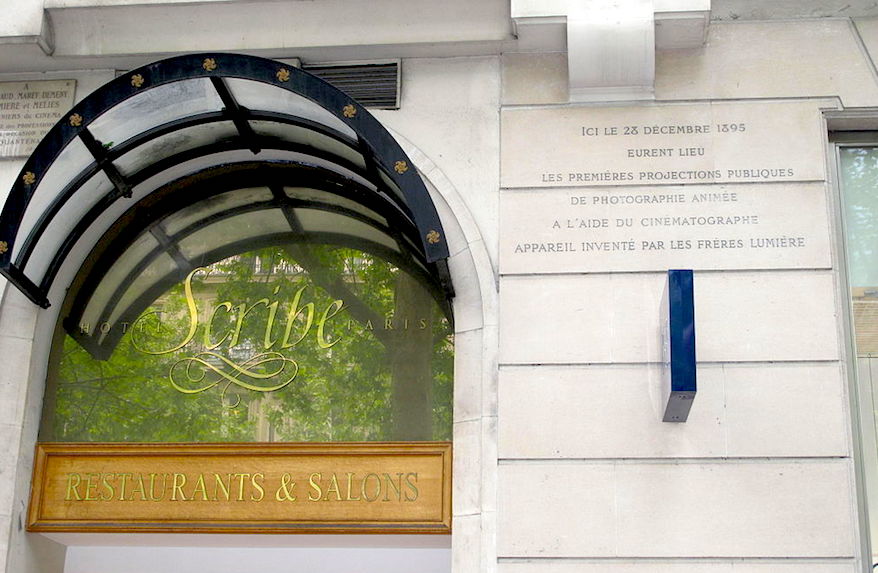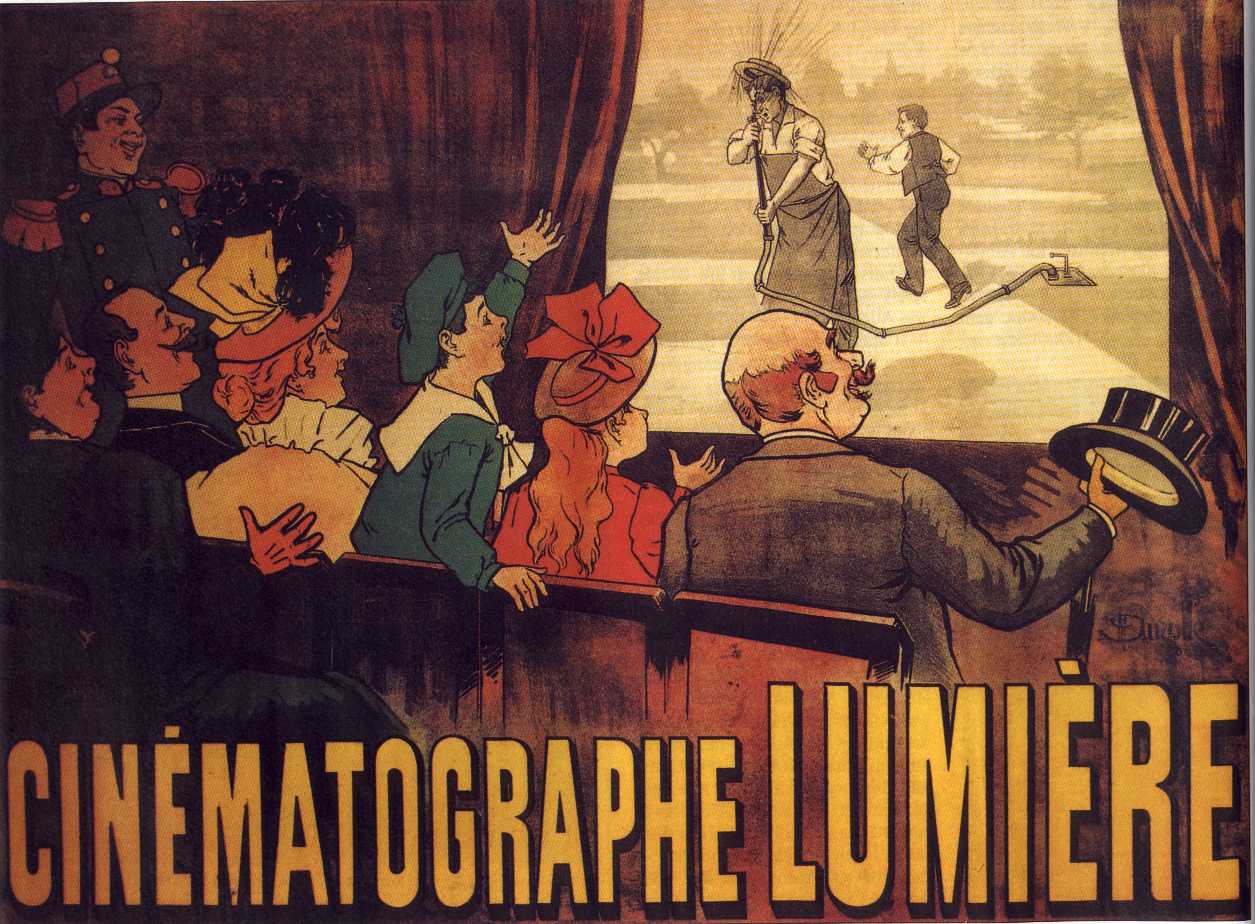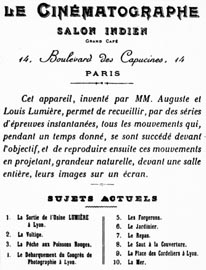Today at the level of the 14 Boulevard des Capucines (9th arrondissement), we only see the luxurious Hotel Scribe, drowned in the constant tumult of Parisian Grands Boulevards. But if you look closely, you’ll notice a plaque at the entrance of Hotel’s restaurants and lounges :
“Here December 28th, 1895 took place the first public screenings of animated photography with the cinematograph, machine invented by the Lumière brothers.”
While the first photograph of a human has been taken to Paris, it is also in the French capital that took place the first public showing of movies. Paris, an eternal link with the history of art!
At the current Scribe hotel location was in the 19th century Le Grand Café, whose basement has been used on December 28, 1895 by Auguste and Louis Lumière to present to the public their invention : the cinematograph.
A device already showed to a group of scientific few months earlier (22 March 1895), the Lumière Brother also wanted to present to the public. They first thought of the Folies-Bergere or Grevin Museum for their projections. But, facing the refusal of theaters directors, they decided to choose a less prestigious place, the Indian Lounge of the Grand Café.
The press is invited, but will not come. Two posters glued to each side of the entrance announce “Lumière cinematograph”, while organizers try to attract passersby.
At the moment the wall brought to lige the movie “La Sortie de l’usine Lumière à Lyon,” viewers were nailed to their seats. The show lasted 20 minutes, divided into 10 short films.
The 10 movies displayed on december 28th 1895
1. La Sortie de l’Usine Lumière à Lyon
2. La Voltige
3. La Pêche aux poissons rouges
4. Le Débarquement du Congrès de Photographie à Lyon
5. Les Forgerons
6. Le Jardinier (l’Arroseur arrosé)
7. Le Repas (de bébé)
8. Le Saut à la couverture
9. La Place des Cordeliers à Lyon
10. La Mer (Baignade en mer)
Among the spectators were Georges Méliés, magician, director of the Theatre, and considered as one of the pioneers of cinema, who understood immediately that this revolutionary machine represented the future of the profession. Unfortunately for him, the Lumière brothers refused to sell their cinematograph.
The success of the projection was such that, after some time, entries totaled over 2,500 a day.




